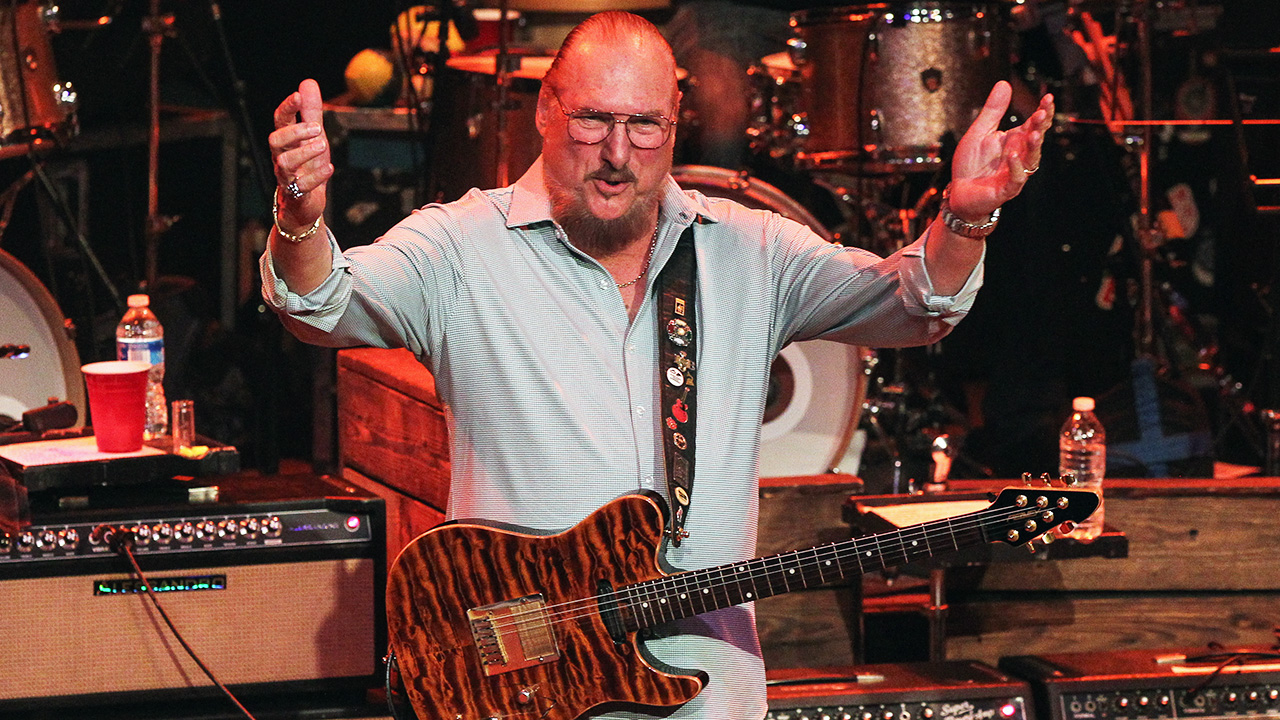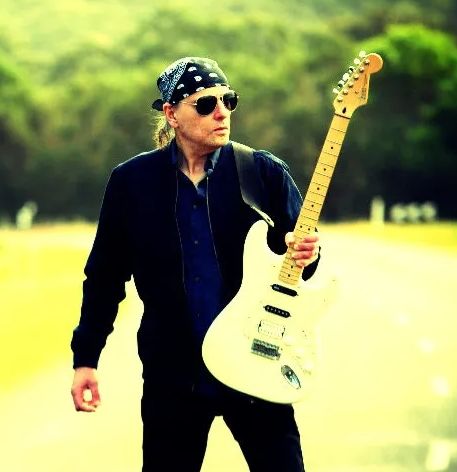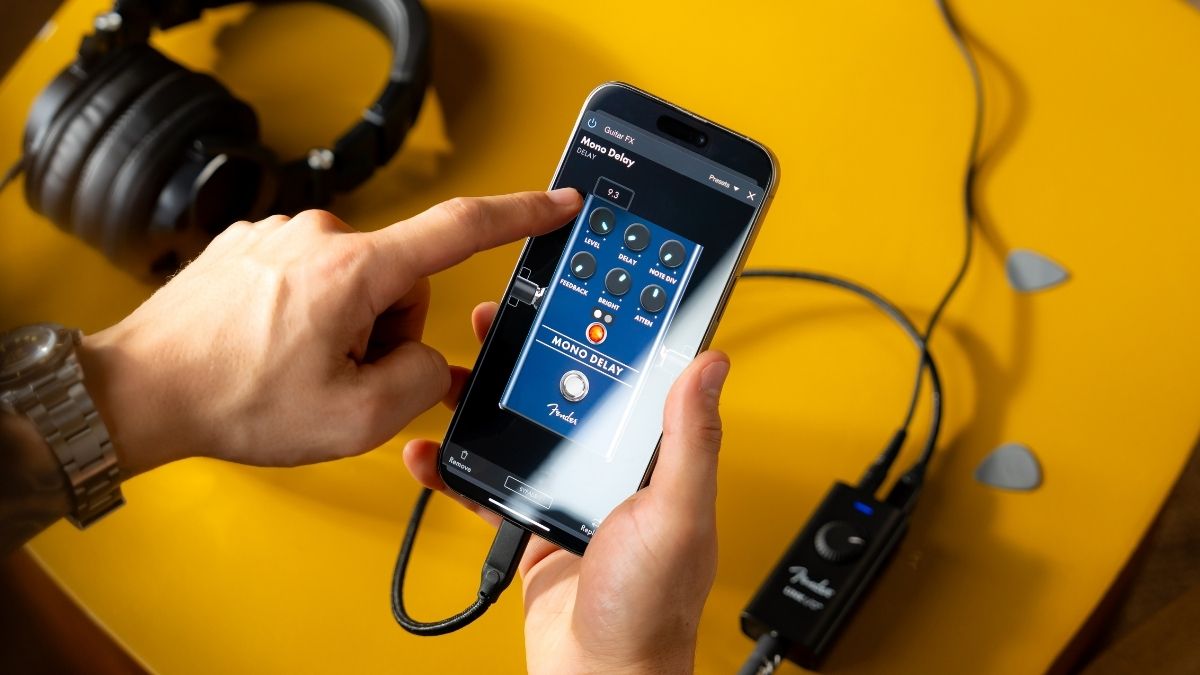“I get accused of not learning more – but I’m not one of those guys. I could learn anything if I wanted to, but I just let it go as it is”: Steve Cropper on recording classic Stax cuts with a Telecaster – and why he thinks his Peavey sounds better
The Stax session icon reflects on the recording of Sittin' on the Dock of the Bay and Soul Man, and looks forward to his new album featuring Billy Gibbons and Brian May

Steve Cropper was a founding member of the famed Stax Records house band Booker T. & The M.G.’s. His guitar, writing and production skills are heard on some of the 1960s‘ most iconic tracks including Soul Man and Sittin’ On The Dock Of The Bay.
Cropper sat down with Guitar World to chat about guitars, his Stax recording days and why he only needs one guitar.
You started out playing a Gibson Byrdland before moving to a Fender Esquire, finally settling on the Fender Telecaster, which became your guitar of choice. How important was the Telecaster to your playing?
“The Tele is a little more versatile. The Esquire is one pickup, while the Tele is a two-pickup guitar. It’s the same guitar, really, except for the differences in pickups.
“I always played the Tele in the middle position, getting a little bit of both pickups, until I got my custom Peavey Telecaster, where somehow the neck pickups sound just as good as the other one. Actually, they sound better to me – not as bright or as scratchy. Peavey made the guitar exactly the way I wanted it to sound.”
Tracks such as Time is Tight and Green Onions really showcase your economical approach to playing. How did you develop the approach of playing just what the groove dictates?
“Thank you for saying so! I just played what I thought I could play and that was it. I didn’t push it too much. There was no need to. I didn't practice at home for that same reason.”
All the latest guitar news, interviews, lessons, reviews, deals and more, direct to your inbox!
You wrote both In the Midnight Hour and Knock on Wood by basing the chordal progression around the dots on the guitar fretboard – an interesting approach!
“I knew we had a hit with Knock on Wood; I knew that Eddie Floyd and I had written a pretty good song. But we couldn’t come up with an intro. I worked on it for about an hour or so, then I said to Eddie, ‘I wonder what In the Midnight Hour would sound like backwards?’
Somebody asked me, ‘How come there’s only one guitar?’ I replied, ‘Because we couldn’t afford two guitar players’
“I played it and he said, ‘That’s it!’ The intro to Knock on Wood is like a bridge change to most people, as it’s in the key of E yet it starts on A.
“It’s true about following the dots. I can’t play without looking at them – not that I couldn’t learn other stuff, but I just didn’t learn. I just play what’s needed. I use the guitars as a tool rather than as an instrument, if it makes sense.
“Somebody asked me one time, ‘How come there’s only one guitar on most of the songs?’ I replied, ‘Because we couldn’t afford two guitar players in those days! It was hard enough just to have three horns on the songs.”
What did you think of the Amii Stewart’s disco version of Knock on Wood?
“I think it was great. They did a good job on that.”
What was the recording session like for Otis Redding’s Sittin’ On The Dock of the Bay?
“I pulled out an Esquire to do those guitar licks on it. That 1961 Fender Esquire is now at the Smithsonian [National Museum of American History]. I couldn’t give them the guitar that was on Green Onions, so I gave them the next best thing – the amp that I played through on Green Onions. That amp was also used on two or three of the Otis songs, too.”
What do you remember of Sam and Dave’s Soul Man?
“Isaac Hayes came back when I was mixing and said, ‘I know I’m not supposed to bother you, but David Porter and I have written a hit for tomorrow’s session in the head. I can’t come up with an intro.’
“So I got my guitar and went down to the piano and asked him to play something from his song. I immediately went to the ‘hammer licks’ – that’s what I call them – and that’s all it is on the third and the first strings. And there was his intro!”
Instrumental music was very popular at that time. Do you think it’s more of a niche market today?
“I haven’t heard much instrumentals of late, but I’m ready for it as I’ve got an instrumental album coming out. I don’t know when we’re going to release it but it’s mostly done. And it’ll be coming out on my label, not somebody else’s label.”
My new album's got Billy Gibbons playing on it and Brian May from Queen
Is this all new material?
“Yeah, all brand new. It’s much like 2021’s Fire It Up album, which got a got nominated for a Grammy. It's got Billy Gibbons playing on it and Brian May from Queen. Brian plays on one song while Billy plays on 11 of the 13 songs.”
You’ve never been an effects person, have you?
“No. I basically just plug my Tele into an amp. I used to use a Fender Quad Reverb, as they were easy enough to rent until around 1990. Then Fender came up with the red-knob Twin.
“Usually when I’d do a session, they’ll have a Super Reverb ready because they figure that’s what I need. But I’d hit an E on it and it would be totally distorted. I’d say, ‘If you get me a Twin, it won’t be distorted.’”
Have you got much of a guitar collection?
“I don’t collect them – never did. But I know my son might want some, so I started buying up all the Gibson J-200s when they had them some years ago. They were just giving them away. It cost you at least £5,000 to have one made, and I was getting them for like 800 to 900 bucks.
“I’m lucky from that standpoint. And since then, I bought some extra guitars. But I don’t collect them – I will leave them to my son.”
How do you think your playing has evolved over your career?
“Well, I still play like I used to. I think it’s because I didn’t learn any more. I get accused of it all the time, not learning more – but I’m not one of those guys. I could learn anything if I wanted to, but I just don’t. I just let it go as it is.”
“People will ask, ‘What’s your favorite song?’ thinking I’m going going to say Dock of the Bay – but that’s not my favorite song. I don’t have a favorite song. When they ask me, I reply, ‘The one I’m playing.’
“I’ve always been that way. I’m a button-pusher: If I don’t like something, if I’ve heard it before, I’ll push a button and listen to something I haven’t heard before. I don’t care what it is; it doesn’t matter to me.”
Joe Matera is an Australian guitarist and music journalist who has spent the past two decades interviewing a who's who of the rock and metal world and written for Guitar World, Total Guitar, Rolling Stone, Goldmine, Sound On Sound, Classic Rock, Metal Hammer and many others. He is also a recording and performing musician and solo artist who has toured Europe on a regular basis and released several well-received albums including instrumental guitar rock outings through various European labels. Roxy Music's Phil Manzanera has called him, "... a great guitarist who knows what an electric guitar should sound like and plays a fluid pleasing style of rock." He's the author of Backstage Pass: The Grit and the Glamour.
![[Sittin' on] The Dock of the Bay [2020 Remaster] - YouTube](https://img.youtube.com/vi/1DRYouQzPrE/maxresdefault.jpg)





